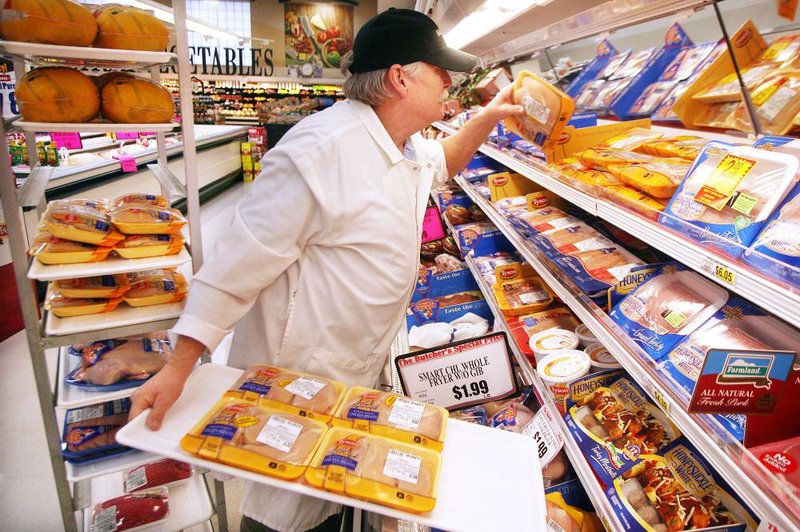LITTLE ROCK — Tyson Foods Inc. on Monday reported fourth-quarter gains in beef, pork and prepared foods segments helped counter a $82 million loss in its chicken segment.
The Springdale-based business reported net income of $97 million, or 26 cents per share, for the quarter that ended Oct. 1, a 54 percent decrease compared with $213 million, or 57 cents, for the same year-ago period.
The world’s largest meat producer missed the average earnings estimate of 32 cents a share from 17 analysts surveyed by Thomson Reuters.
Revenue grew about 13 percent to $8.4 billion for the 2011 fourth quarter compared with $7.44 billion in the fourth quarter of 2010.
For the year, Tyson reported net income of $750 million, or $1.97 per share, compared with $780 million, or $2.06 per share, for 2010. Revenue for 2011 was record-breaking at $32.27 million compared with $28.43 million in 2010.
Any financial difficulties associated with an oversupplied chicken market were shortlived since Tyson reported its chicken segment as having returned to profitability during its fiscal 2012 first quarter, which began in October.
During the fourth quarter, Tyson reported a one-time $29 million impairment charge related to operations in Brazil and a $315 million charge associated with grain and feed ingredient costs as having contributed to the chicken segment’s loss.
The fourth quarter “should be the bottom for the [chicken] segment,” Tim Ramey, an equity analyst with D.A. Davidson & Co. of Lake Oswego, Ore., wrote in a research note. D.A. Davidson performs financial services for Tyson.
Tyson is the nation’s largest poultry producer.
Pilgrim’s Pride of Greeley, Colo., ranks as second largest.
Pilgrim’s Pride, too, reported weak earnings. In late October the company owned by Brazilian meat producer JBS SA of Sao Paulo posted a third-quarter net loss of $162.5 million, which dragged down JBS’s overall performance and contributed to its $38.2 million net loss.
Shares of Tyson rose one cent, or less than 1 percent, to $19.46 per share Monday on the New York Stock Exchange. Its stock has traded as high as $20.12 and as low as $15.60 in the past year.
Performance in other meat segments was strong in part because of export demand, said James V. Lochner, Tyson’s chief operating officer, during a conference call with analysts.
“The returns have been fantastic,” he said referring to pork. And the success of the segment cannot be attributed to any one factor. Instead it’s been small incremental improvements made to labor and pricing that have helped with profitability.
“It’s not real profound but that’s how we operate all our business” segments, Lochner said.
Beef volume fell during the quarter as supplies tightened and a “purposeful reduction of head processed by the company,” Heather L. Jones, an equity analyst with BB&T Capital Markets in Richmond, Va., wrote in an e-mail. BB&T performs financial services for Tyson.
During the call Lochner said the drought in the Southwest affected supply in some regional feed lots, but that beef supplies overall were normal.
The prepared foods segment reported an improvement in lunch-meat business, as consumers continue looking for reasonably priced choices in the meat aisle to cut costs, said Donnie Smith, the chief executive officer of Tyson Foods Inc.
“Consumers are looking for value, from a drive-through window to a full-service restaurant,” Smith said Monday during the same conference call.
The economy is not going to help Tyson grow its business, he said, so instead Tyson will have to rely on innovations. Examples include marketing chicken as a lunch meat or putting chicken in sausage, Smith said.
In other news, Tyson reported buying 9.7 million shares, or about $170 million, of common stock during the fiscal year that starts in October and ends in September.
In May, Tyson reactivated a program to buy back up to 22.5 million shares of common stock. Tyson officials also said its 2012 capital expenditure budget of $800 million will be used for domestic and international operations such as hiring a second shift to work in Brazilian plants.
Business, Pages 21 on 11/22/2011
